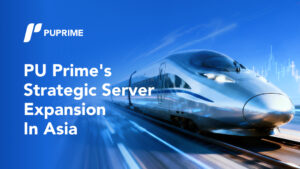The NVIDIA Inception member managing 1 petabyte of AI training data is transitioning from its proprietary infrastructure to battle-tested blockchain rails, and inviting the community to help choose where it lands next.
Pundi AI has announced plans to sunset its Pundi AIFX Omnilayer, a custom EVM-Cosmos hybrid chain, and begin a public evaluation process to select a new blockchain foundation. For a project managing over 224,000 datasets and 28,000 dataset owners, this isn’t a routine migration. It’s a strategic evolution that recognises the infrastructure demands of decentralised AI have grown beyond what a single custom chain was designed to handle.
The move signals a broader maturation in Web3: sometimes the best infrastructure decision isn’t building your own stack, but choosing the right one to build on top of.
The Evolution
Launched initially as Function X in 2021, the Omnilayer pioneered cross-chain data flow and validator-based governance for AI workloads. As Pundi AI’s scope expanded-adding data labeling tools, a decentralised marketplace, tokenised dataset launchpad (Data Pump), and an upcoming AI MM Agent for liquidity optimisation – the team identified an opportunity to tap into deeper liquidity, broader composability with DeFi protocols, and enterprise-grade security infrastructure that established ecosystems already provide.
“Ethereum stands out for its maturity, liquidity, and governance frameworks,” said Zac Cheah, co-founder of Pundi AI. “But our priority is to find the best possible foundation for Pundi AI’s next decade, one that ensures interoperability, security, and a global developer base.”
Why Ethereum (Probably)
While the selection process remains formally open, Ethereum has emerged as the frontrunner. The reasoning is straightforward: network effects matter.
Ethereum currently hosts approximately 63% of DeFi protocols and commands over $96 billion in total value locked across its ecosystem. For a project that needs to integrate with liquidity venues like Uniswap and Curve, leverage governance tools like Snapshot, and maintain credibility with institutional partners, Ethereum’s infrastructure depth is unmatched.
But other contenders are in the mix:
- Base – Pundi AI already maintains a presence on Coinbase’s Layer 2, making migration paths cleaner and benefiting from Coinbase’s institutional distribution network.
- BNB Chain – Retail-friendly, hosts existing Pundi AI token pairs, and offers lower transaction costs for high-frequency data operations.
The team has made it clear this won’t be a rushed decision. “We are not rushing into hype cycles or chasing trends,” Zac emphasised. “This is about choosing the right infrastructure for the next ten years of decentralised AI.”
Open Migration, Real Governance
Pundi AI is structuring this as a community-led process, not a unilateral executive decision. A formal governance proposal will be introduced, giving token holders direct input on the final destination.
The migration roadmap includes:
- Phased deprecation of the Omnilayer validator set
- Safe migration of smart contracts and token assets
- Community-based voting on final destination and timelines
- Enhanced security audits and composability assessments
This transparency is notable in an industry where protocol teams frequently make critical infrastructure decisions behind closed doors. By making trade-offs and proposals publicly debatable, Pundi AI is testing whether decentralised governance can handle complex technical decisions, not just token allocation votes.
The Bigger Picture
Pundi AI’s decision arrives at a pivotal moment for AI infrastructure. While multiple platforms are building pieces of the decentralised AI puzzle, Pundi AI remains the only fully integrated stack combining data labeling, marketplace operations, and liquidity optimisation tools.
As an NVIDIA Inception member, the project carries technical credibility. Managing over 1 petabyte of user-contributed datasets positions it as substantial infrastructure with real traction. The strategic question isn’t about what Pundi AI has built-it’s whether that foundation can scale further by leveraging established blockchain ecosystems rather than maintaining independent infrastructure.
The answer likely depends on execution. Migrating an active blockchain with live users, validators, and deployed contracts is complex and requires careful coordination. The team will need to demonstrate that enhanced liquidity and composability deliver meaningful value for the migration effort.
What Happens Next
Pundi AI will publish a formal governance proposal detailing migration mechanics, risk assessments, and timeline parameters. The community will vote. Audits will be conducted. And assuming the migration proceeds, one of the few AI-focused blockchain projects with meaningful traction will either validate the “build on Ethereum” thesis or reveal insights about where specialised infrastructure still adds value.
For the broader crypto ecosystem, this is a test case worth watching. If Pundi AI successfully migrates and thrives, it strengthens the argument that established L1/L2 ecosystems are strong foundations for specialised applications. If the migration reveals dependencies that benefit from custom infrastructure, it could inform how other projects think about chain architecture.
Either way, Pundi AI is making a bet that matters: in a world demanding composability, the best infrastructure isn’t always the one you control-it’s the one everyone else is already building on.












